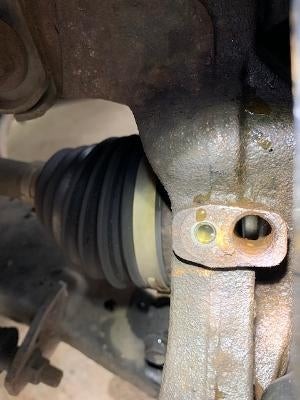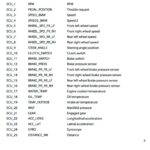The OBD2 code P0500 indicates a problem with the Vehicle Speed Sensor (VSS). This article delves into diagnosing and resolving this common issue, drawing from a real-world experience with a 2006 Subaru Tribeca. While a P0500 code often points to a faulty ABS wheel speed sensor, the root cause can be more complex.
Decoding the P0500 Code on Subarus
In Subarus, the P0500 code doesn’t directly refer to the VSS in the transmission. Instead, it signifies an issue within the ABS/VDC system. To pinpoint the problem, you need to access secondary cruise control codes (C**** codes). These codes provide more specific information about the fault.
Retrieving Cruise Control Codes (C** Codes)**
Reading C codes requires the engine to be running. A simple method is using FreeSSM software and a VAG-COM KKL 409.1 OBD2 cable. Connect the cable to your vehicle’s OBD2 port and launch FreeSSM. With the engine running, navigate to the “Cruise Control” tab in the engine diagnostics section to retrieve the C codes.
Common Misdiagnosis: C0043
If you attempt to read C**** codes with the car’s ignition “on” but the engine not running, you might encounter the C0043 code. This is a default “cancel code” indicating the ABS/VDC module is unresponsive. It’s not a genuine fault code and can be ignored.
Case Study: C0023 and a Damaged Tone Ring
In the Tribeca example, FreeSSM revealed the C0023 code, pointing to the front left ABS wheel speed sensor. Inspection revealed a damaged sensor, seemingly caused by a chewed-up magnetic tone encoder ring on the hub assembly. Replacing the hub and sensor seemed like the logical solution, but the issue persisted.
Further Diagnosis: Voltage and Wiring
Following the Factory Service Manual (FSM) for code C0023, voltage checks at the speed sensor connector and continuity tests of the wiring harness to the ABS/VDC module were conducted. Everything appeared normal.
The Unexpected Culprit: A Damaged Dust Shield
Further investigation revealed a deformed dust shield on the CV axle. This shield, designed to protect the ABS sensor, was being pushed inwards by the axle, interfering with the sensor’s operation. Replacing the axle and the speed sensor finally resolved the P0500 issue.
Conclusion: Thorough Diagnosis is Key
The P0500 code, while seemingly straightforward, can have various underlying causes. Relying solely on initial code readings and replacing parts without thorough diagnosis can lead to wasted time and money. Using diagnostic tools like FreeSSM, consulting the FSM, and conducting systematic checks are crucial for accurately pinpointing the root cause of a P0500 code and implementing the correct repair.


